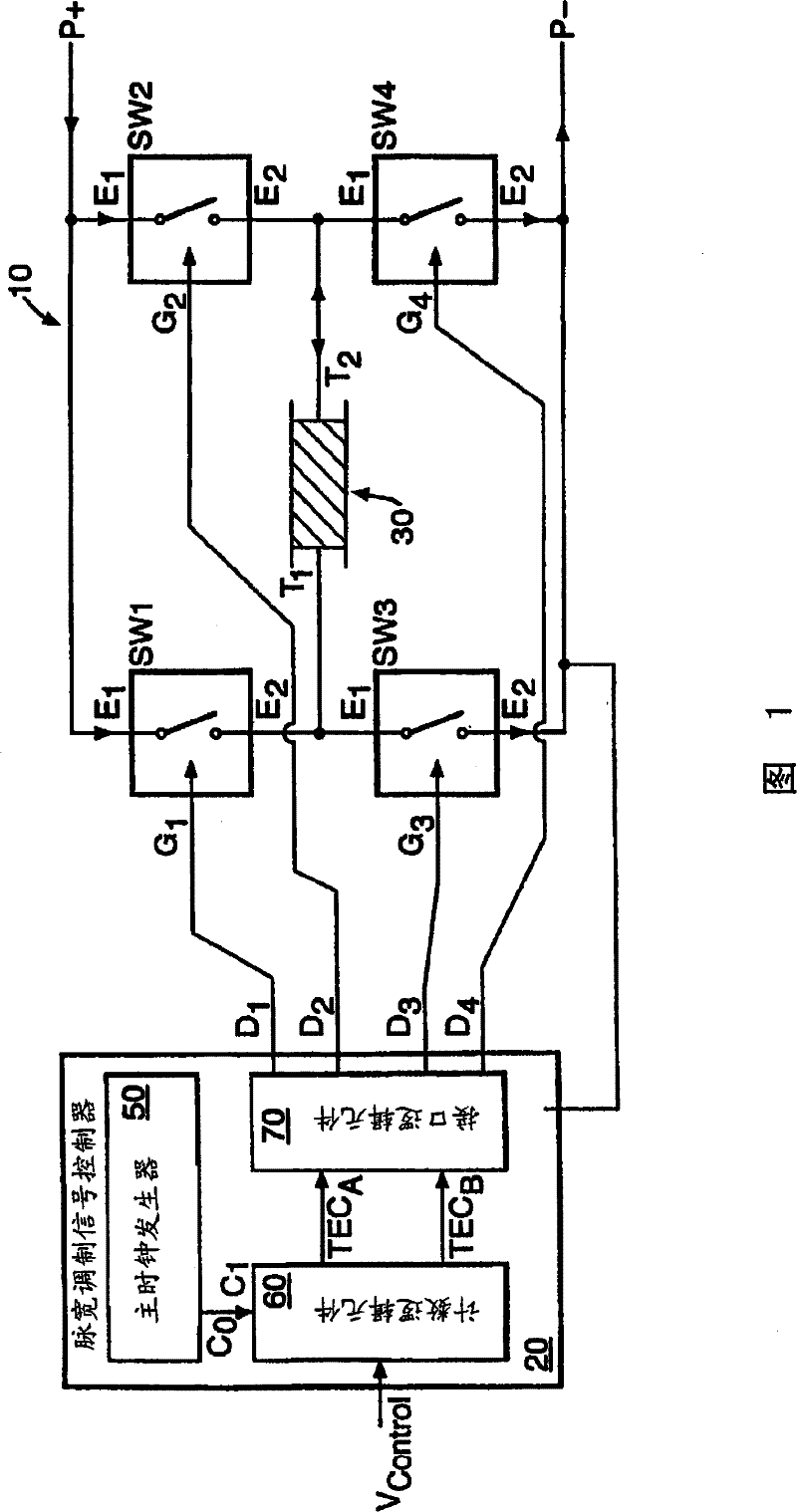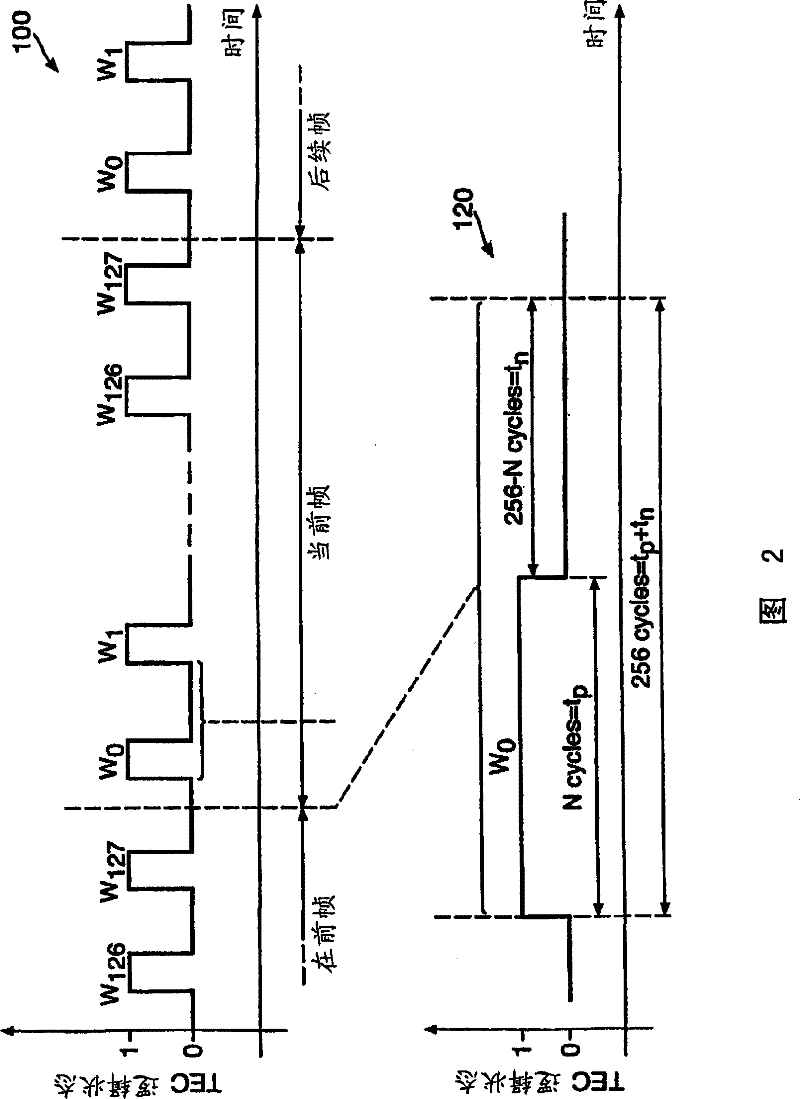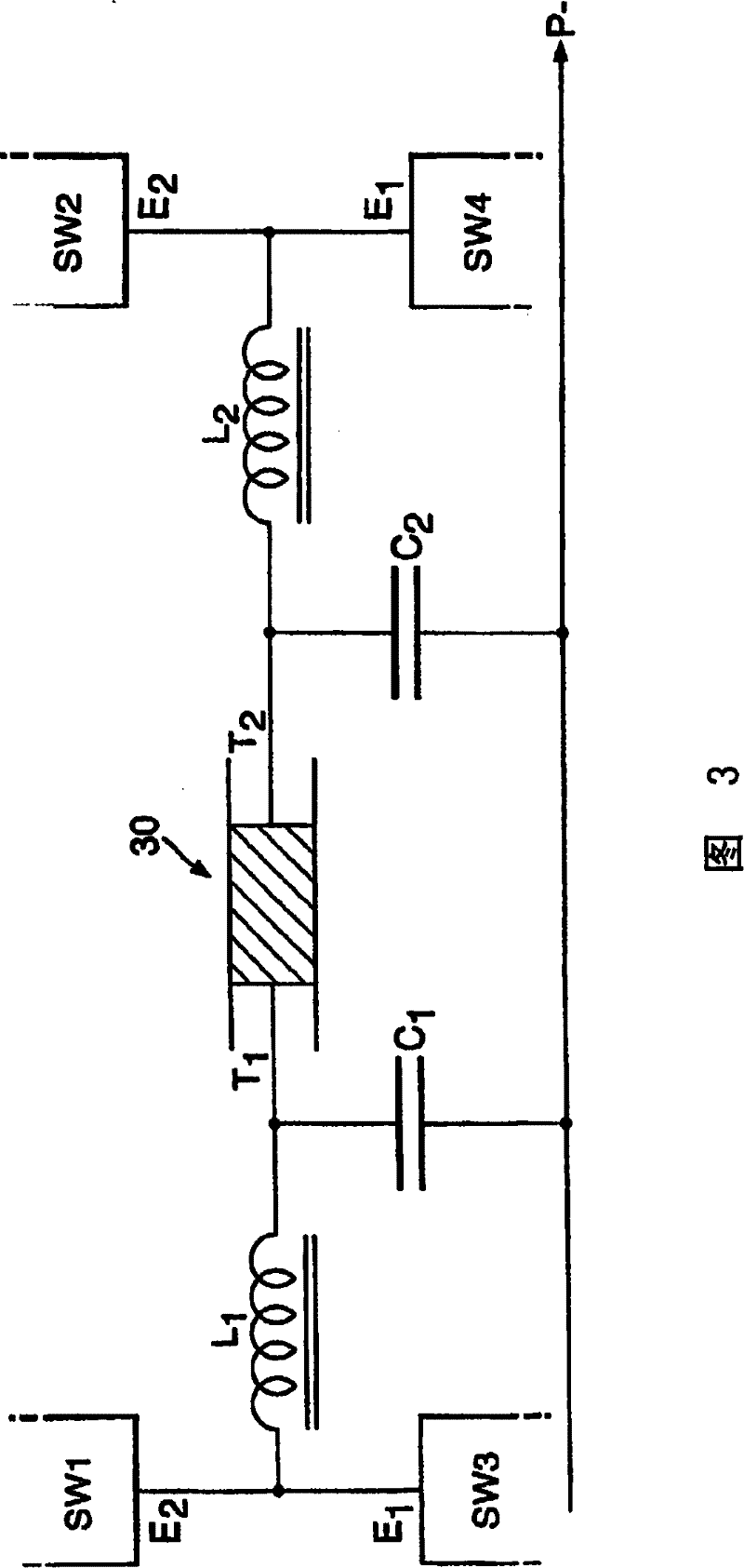Optical attenuator
An attenuator and optical technology, applied in optics, nonlinear optics, instruments, etc., can solve the problems of increasing the cost of digital circuits, increasing the power consumption of circuits, and the limitation of digital circuit clock frequency, so as to improve the resolution level and improve the The effect of power efficiency
- Summary
- Abstract
- Description
- Claims
- Application Information
AI Technical Summary
Problems solved by technology
Method used
Image
Examples
Embodiment Construction
[0051] refer to figure 1 , figure 1 A PWM circuit 10 is shown in FIG. 2 , which is used to control the current entering the Seebeck effect heating element 30 . As will be explained below, heating elements are often used to control the temperature and thus operate electro-optical components such as attenuators, filters or solid-state lasers.
[0052] The circuit 10 comprises a PWM controller 20, and four MOSFET switches SW1, SW2, SW3, SW4. Element 30 is what is known as a "Peltier element". Controller 20 includes a master clock generator 50 , a counter logic unit 60 and an interface logic unit 70 .
[0053] Next, the connection between the various components in the circuit 10 is described, and the interconnection relationship is described in figure 1 middle.
[0054] Each of the switches SW1, SW2, SW3, SW4 comprises a first electrode, a second electrode and an associated gate G. A potential is applied to the gate G to control the current flowing from the first electrode E...
PUM
 Login to View More
Login to View More Abstract
Description
Claims
Application Information
 Login to View More
Login to View More - R&D
- Intellectual Property
- Life Sciences
- Materials
- Tech Scout
- Unparalleled Data Quality
- Higher Quality Content
- 60% Fewer Hallucinations
Browse by: Latest US Patents, China's latest patents, Technical Efficacy Thesaurus, Application Domain, Technology Topic, Popular Technical Reports.
© 2025 PatSnap. All rights reserved.Legal|Privacy policy|Modern Slavery Act Transparency Statement|Sitemap|About US| Contact US: help@patsnap.com



